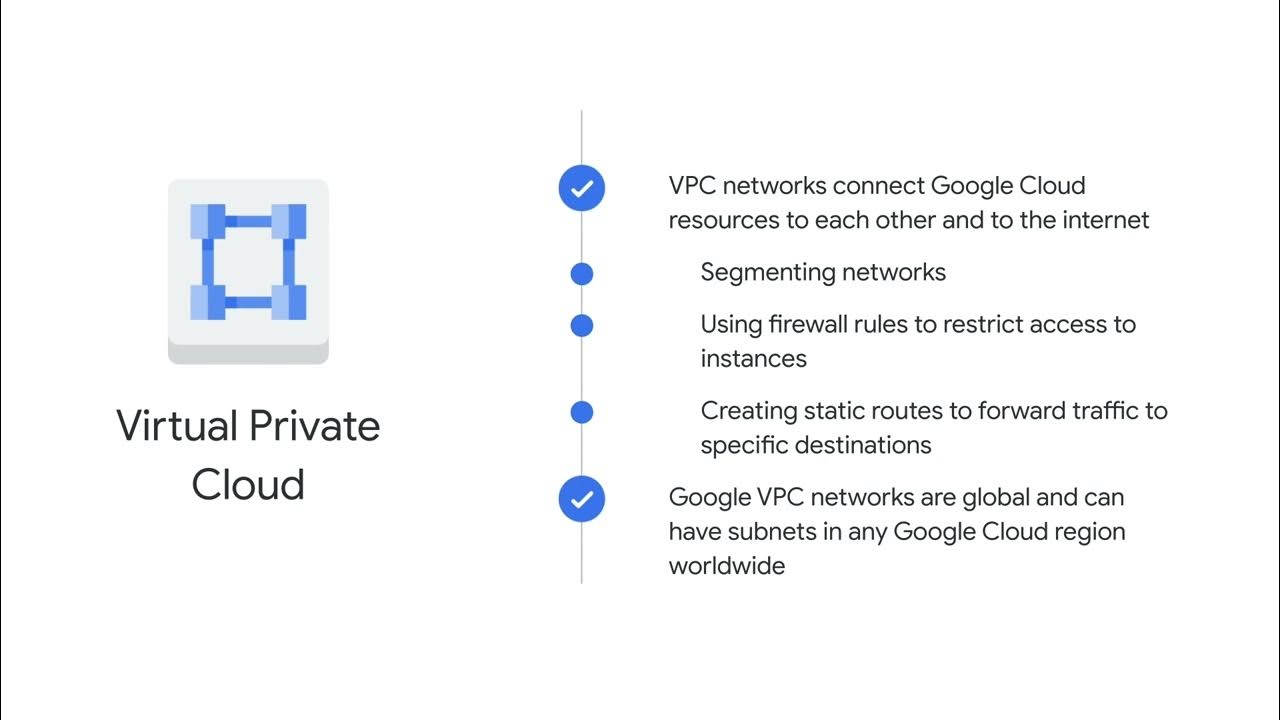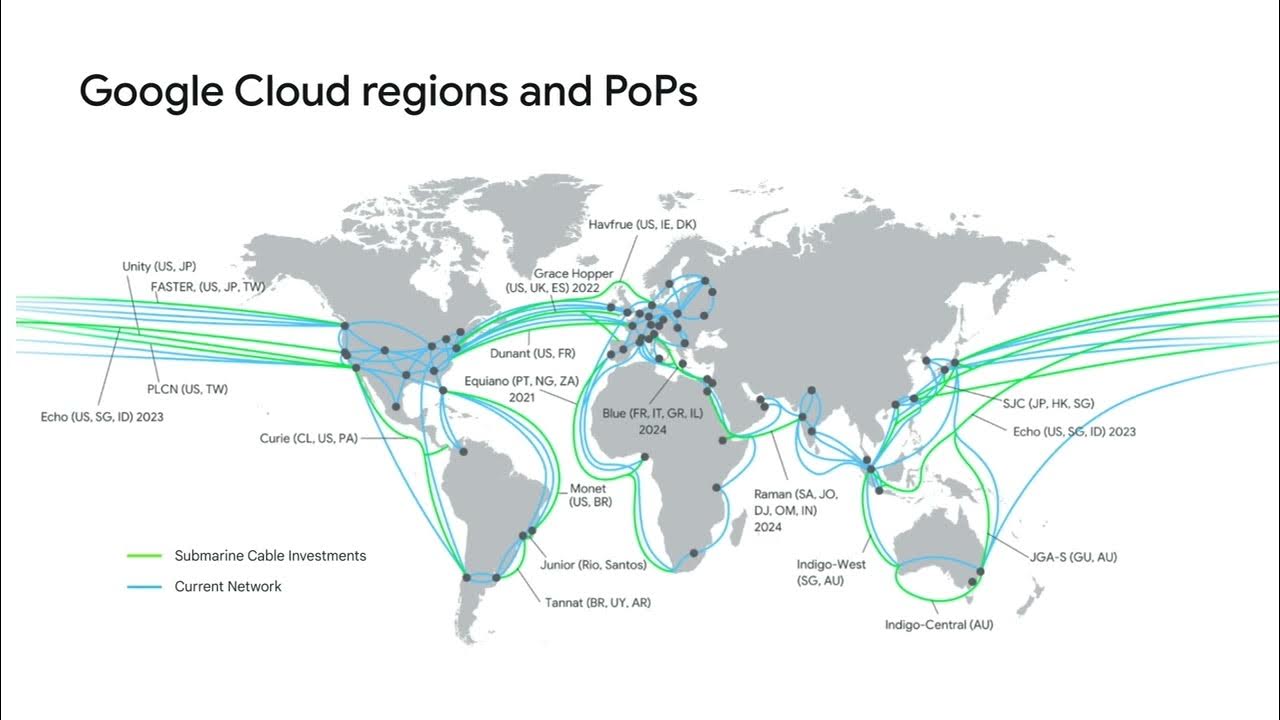Custom Networking for Amazon EKS using Rafay
Summary
TLDRThis video explores Amazon's EKS and its VPC architecture, highlighting the challenges of IP exhaustion and the benefits of custom networking. It demonstrates how to implement a secondary CIDR block to alleviate IP address limitations and provides a practical example of setting up VPCs with primary and secondary subnets. The video also showcases how the cluster spec file and the 'kubectl' utility are used to manage EKS clusters with custom networking, ensuring efficient allocation of IP addresses to pods based on their network access requirements.
Takeaways
- 🌐 The video discusses Amazon's EKS (Elastic Kubernetes Service) and its VPC (Virtual Private Cloud) architecture with and without custom networking.
- 🔄 The script highlights the challenges of IP exhaustion in the primary CIDR block when using the default VPC architecture without custom networking.
- 💡 Custom networking is introduced as a solution to avoid IP address depletion by using a secondary CIDR block for secondary ENIs (Elastic Network Interfaces).
- 🛠️ The video provides a demo of how the RawFame (Raftery) tool manages the lifecycle of EKS clusters with custom networking.
- 📈 Custom networking involves creating a secondary CIDR block and subnets to distribute the IP address allocation more efficiently.
- 📝 The script explains the use of a cluster spec file in RawFame to configure the EKS cluster, including custom networking settings.
- 🔧 An ENI Config is a new configuration resource created for custom networking within the cluster spec, defining the subnets and security groups for ENIs.
- 📈 The demo shows the use of the 'rudder' CLI utility to create a new EKS cluster with custom networking configurations.
- 🔎 The video demonstrates analyzing pod resources to confirm that they are utilizing the custom networking configuration as intended.
- 📊 Pods requiring host network access receive IP addresses from the primary CIDR block, while others are assigned from the secondary block.
- 🔄 Traffic from pods on the secondary subnet that needs to leave the cluster is routed through the instance's primary ENI and source-netted to the primary IP address.
Q & A
What is the main topic of the video?
-The main topic of the video is Amazon EKS (Elastic Kubernetes Service) and its custom networking solutions.
Why might customers choose to implement custom networking with Amazon EKS?
-Customers might choose to implement custom networking to avoid IP address exhaustion in their primary CIDR block and to manage network architecture more efficiently.
What is a common issue faced by customers without custom networking in Amazon EKS?
-A common issue is the potential exhaustion of all IP addresses in the primary subnet, which can be costly and challenging to re-architect.
What is a CIDR block and why is it important in the context of this video?
-A CIDR block is a range of IP addresses used to create subnets. It is important because the video discusses managing IP address allocation efficiently across primary and secondary CIDR blocks.
How does custom networking in Amazon EKS help with IP address management?
-Custom networking allows for the use of a secondary CIDR block to serve secondary ENIs (Elastic Network Interfaces), thus preserving IP addresses in the primary CIDR block.
What is an ENI in the context of Amazon EKS?
-An ENI is an Elastic Network Interface, which is a virtual network card that can be attached to an instance in a VPC to enable network connectivity.
What is the purpose of the 'cluster spec' file mentioned in the video?
-The 'cluster spec' file is a configuration file for a managed EKS cluster, defining the full configuration of the cluster, including networking and any additional add-ons or configurations.
What is an 'eni config' and how is it used in custom networking?
-An 'eni config' is a new custom resource definition created for custom networking in EKS. It defines the subnets for Elastic Network Interfaces and can include additional Security Group roles.
How does the video demonstrate the implementation of custom networking in Amazon EKS?
-The video provides a demo showing how to configure custom networking using a 'cluster spec' file and the 'kubectl' CLI utility, followed by an analysis of pod resources to confirm the implementation.
What is the significance of the 'kubectl' utility in the context of the video?
-The 'kubectl' utility is used to create a new EKS cluster with the custom networking configuration defined in the 'cluster spec' file.
How can you verify that custom networking is working as expected in an EKS cluster?
-You can verify custom networking by checking the IP addresses assigned to the nodes and pods in the cluster, ensuring they are utilizing the defined subnets and CIDR blocks.
Outlines

このセクションは有料ユーザー限定です。 アクセスするには、アップグレードをお願いします。
今すぐアップグレードMindmap

このセクションは有料ユーザー限定です。 アクセスするには、アップグレードをお願いします。
今すぐアップグレードKeywords

このセクションは有料ユーザー限定です。 アクセスするには、アップグレードをお願いします。
今すぐアップグレードHighlights

このセクションは有料ユーザー限定です。 アクセスするには、アップグレードをお願いします。
今すぐアップグレードTranscripts

このセクションは有料ユーザー限定です。 アクセスするには、アップグレードをお願いします。
今すぐアップグレード5.0 / 5 (0 votes)






